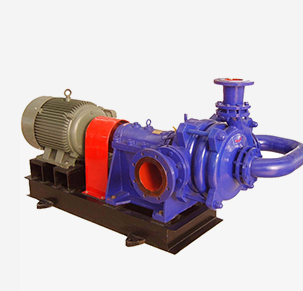English
- Afrikaans
- Albanian
- Amharic
- Arabic
- Armenian
- Azerbaijani
- Basque
- Belarusian
- Bengali
- Bosnian
- Bulgarian
- Catalan
- Cebuano
- Corsican
- Croatian
- Czech
- Danish
- Dutch
- English
- Esperanto
- Estonian
- Finnish
- French
- Frisian
- Galician
- Georgian
- German
- Greek
- Gujarati
- Haitian Creole
- hausa
- hawaiian
- Hebrew
- Hindi
- Miao
- Hungarian
- Icelandic
- igbo
- Indonesian
- irish
- Italian
- Japanese
- Javanese
- Kannada
- kazakh
- Khmer
- Rwandese
- Korean
- Kurdish
- Kyrgyz
- Lao
- Latin
- Latvian
- Lithuanian
- Luxembourgish
- Macedonian
- Malgashi
- Malay
- Malayalam
- Maltese
- Maori
- Marathi
- Mongolian
- Myanmar
- Nepali
- Norwegian
- Norwegian
- Occitan
- Pashto
- Persian
- Polish
- Portuguese
- Punjabi
- Romanian
- Russian
- Samoan
- Scottish Gaelic
- Serbian
- Sesotho
- Shona
- Sindhi
- Sinhala
- Slovak
- Slovenian
- Somali
- Spanish
- Sundanese
- Swahili
- Swedish
- Tagalog
- Tajik
- Tamil
- Tatar
- Telugu
- Thai
- Turkish
- Turkmen
- Ukrainian
- Urdu
- Uighur
- Uzbek
- Vietnamese
- Welsh
- Bantu
- Yiddish
- Yoruba
- Zulu
Telephone: +86 13120555503
Email: frank@cypump.com
Nov . 22, 2024 06:42 Back to list
mixed flow pumps
Understanding Mixed Flow Pumps
Mixed flow pumps are a type of centrifugal pump that combines elements of both axial and radial flow pumps. These pumps play a crucial role in various industrial applications, including water treatment, irrigation, and municipal water supply systems. They are specifically designed to handle large volumes of fluid at moderate pressures, making them versatile in numerous operational scenarios.
Design and Operation
The distinctive characteristic of mixed flow pumps lies in their impeller design. The impeller typically has a series of curved blades that facilitate both axial (along the pump shaft) and radial (perpendicular to the pump shaft) fluid movement. This hybrid design allows mixed flow pumps to generate a significant amount of lift while moving water efficiently. Due to their construction, these pumps can handle a wide range of flow rates and are efficient across various operating conditions.
When a mixed flow pump operates, the fluid enters the impeller at its eye (the center) and is accelerated by the rotating blades. The design causes the fluid to be pushed out axially while also receiving a radial component of velocity. The combination of these flow components results in improved performance over a broader range of operating conditions compared to purely axial or radial pumps.
Applications
Mixed flow pumps are predominantly used in applications where high flow rates are necessary but where pressure requirements are moderate. Common installations include
1. Wastewater Treatment Plants Here, mixed flow pumps are employed to transport effluent and influent, playing a crucial role in the water treatment process.
mixed flow pumps

3. Cooling Water Circulation Many industrial plants require cooling systems that utilize mixed flow pumps to circulate cooling water, enhancing efficiency and performance.
4. Firefighting Systems Due to their ability to deliver high volumes of water quickly, mixed flow pumps are often used in firefighting scenarios to ensure sufficient water supply.
5. Flood Control These pumps are instrumental in managing excess water during heavy rains or floods, preventing damage to property and infrastructure.
Advantages and Disadvantages
One of the main advantages of mixed flow pumps is their ability to handle large flow rates while maintaining reasonable efficiency. They are also relatively simple in design, which can lead to lower maintenance costs and higher reliability. Additionally, their hybrid flow nature allows for adaptability in various systems.
However, mixed flow pumps are not universally suitable for all applications. They typically have a narrower operating range in terms of efficiency compared to specialized pumps, and their performance can be less optimal at very low flow rates. Therefore, careful consideration must be given when selecting a pump for specific operational needs.
Conclusion
In summary, mixed flow pumps are a critical component in many industrial and municipal applications. Their unique design offers a blend of axial and radial flow characteristics, allowing for efficient handling of large volumes of fluid. As demands for water management systems continue to rise, understanding and utilizing mixed flow pumps will be essential for achieving efficient and effective fluid transport solutions.
-
ISG Series Vertical Pipeline Pump - Chi Yuan Pumps Co., LTD.|High Efficiency, Energy Saving, Low Noise
NewsJul.30,2025
-
ISG Series Vertical Pipeline Pump- Chi Yuan Pumps|High Efficiency&Low Noise
NewsJul.30,2025
-
ISG Series Vertical Pipeline Pump-Chi Yuan Pumps Co., LTD.|High Efficiency&Energy Conservation
NewsJul.30,2025
-
ISG Series Vertical Pipeline Pump - Chi Yuan Pumps Co., LTD.|Advanced Hydraulic Design&Energy-Efficient Solutions
NewsJul.30,2025
-
ISG Series Vertical Pipeline Pump - Chi Yuan Pumps Co., LTD.
NewsJul.30,2025
-
ISG Series Vertical Pipeline Pump - Chi Yuan Pumps Co., LTD.|energy-efficient fluid handling&industrial durability
NewsJul.30,2025










